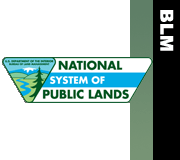|
Print Page | |||||||||
| Recordation of NOL, AM, TR, REL, & CA | ||||||||||
If your claim is a lode claim, you must describe lode claims by metes and bounds beginning at the discovery point on the claim and include a tie to natural objects or permanent monuments (such as township and section survey monuments, official U.S. mineral survey monuments, etc.) If the mining claim is an association placer, the maximum acreage allowed is 160 acres with at least 8 locators, 20 acres per claimant. A corporation is considered an individual entity; therefore, as an individual entity it is allowed 20 acres. A placer claim and mill site must be described by survey subdivision. If the placer claim or mill site can not be subdivided by survey subdivision then a metes and bounds description is required. A map outlining the claim/site boundaries within a section (showing section boundaries) must be submitted. One map may be submitted for two or more claims/sites as long as each claim/site is clearly identified. Local printing companies, office supply stores, stationery stores, and BLM offices are possible sources for obtaining location notice and certificate forms. See Example of Notice of Location/Amendment
BLM Recordation: The Federal Land Policy and Management Act of 1976 (FLPMA) and the implementing regulations at 43 CFR 3833 require claimants to file a copy of the official record of the notice or certificate of location with the BLM (State Office) within 90 days from date of location. This includes any amendments (i.e., changes/corrections) in claim boundaries and any changes in ownership. FLPMA (Sec. 314) also requires a map outlining the claim/site boundaries within a section to be filed with the BLM. Other documents filed under State law must also accompany the copy of the official record filed with the BLM. Even if State law does not require recordation, the owner must file proper documents with the BLM. The BLM considers a claim or site abandoned and void if the claimant fails to record with the BLM within the prescribed period. Use a separate notice or certificate of location for each claim/site. See FILINGS for fees required at time of recordation.
An amendment to a location for an active mining claim or site can be made at any time and must be filed with the appropriate county Recorder's Office and the proper BLM State Office. It can be made on the same type of form as was used for the original location. An amended location relates back to the original date that the mining claim or site was located. The BLM has a $10 nonrefundable processing fee to file an amendment. Amendments are used to:
Amended NOLs must be recorded at the proper county recorder's office prior to recordation with the BLM (Regulation 43 CFR 3833.22). You must record amended NOLs with the BLM within 90 days after you record the amended NOL in the local/county recording office. BLM will not recognize any amendment to your mining claim until you file it properly. Recording a Transfer Document Where an owner of an unpatented mining claim sells, assigns, or otherwise conveys all or any part of his interest in the claim, his transferee shall file the transfer document in the proper BLM State Office within 60 days and also with the appropriate county Recorder's Office. Examples of transfer documents are transfer of interest, quitclaim deed, change of name, will, etc. The transfer document shall identify the transferee's name and signature, the name and address of the new owner, the claim or site name(s) and the BLM serial number(s). The BLM has a $10 nonrefundable processing fee to file transfer documents for each claim or site (per document). Each transferee must pay the service charge.
Upon abandonment of a claim or site or relinquishment to the Federal Government, file a notice with the appropriate county Recorder's Office and the proper BLM State Office. No particular form is required; a letter is acceptable. Be sure to include the claim or site name(s) and the BLM serial number(s). All current owners who are abandoning their interest must sign the document. There is no charge to file these documents. Recording a Change of Address The change of address document shall identify the claim or site name(s), the BLM serial number(s), and the owners name and new address. There is no charge to file this document. |
||||||||||






